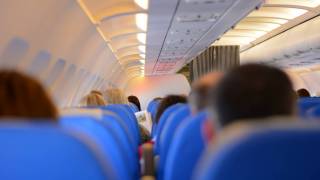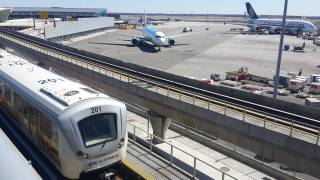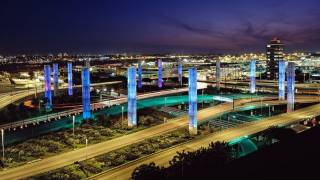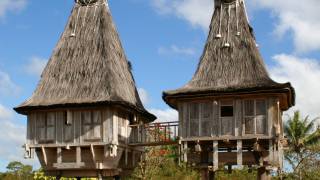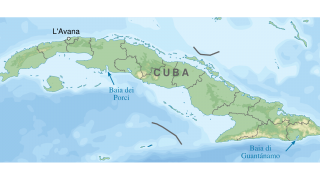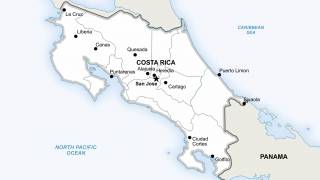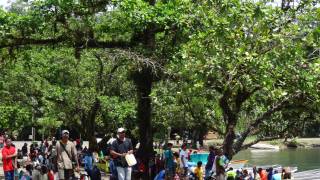Visiting Mexico Includes Expanded Risks

The US Department of State announced an expansion of the current Level 2 Travel Advisory for the United Mexican States.
As of December 17, 2019, the previous ‘Exercise Increased Caution’ Travel Advisory now includes updates to U.S. government restrictions on personnel, especially in Baja California, Chihuahua, Colima, Durango, Nuevo Leon, Sonora, Tamaulipas, Yucatan, and Zacatecas.
This reissued State Department Advisory says the ‘U.S. government has limited ability to provide emergency services to U.S. citizens in many areas of Mexico, and travel by U.S. government employees to certain areas is prohibited or significantly restricted.’
And, ‘U.S. government employees may not travel between cities after dark, may not hail taxis on the street, and must rely on dispatched vehicles, including from app-based services like Uber or from regulated taxi stands.’
Additionally, ‘U.S. government employees may not drive from the U.S.-Mexico border to or from the interior parts of Mexico, with the exception of daytime travel within Baja California, between Nogales and Hermosillo on Mexican Federal Highway 15D, and between Nuevo Laredo and Monterrey on Highway 85D.’
This Level 2 Travel Advisory also includes various Level 3 and Level 4 notices, such as the following:
Level 4 - Do Not Travel To
- Colima state due to crime.
- Guerrero state due to crime.
- Michoacán state due to crime.
- Sinaloa state due to crime.
- Tamaulipas state due to crime and kidnapping.
Level 3 - Reconsider Travel To
- Chihuahua state due to crime.
- Coahuila state due to crime.
- Durango state due to crime.
- Jalisco state due to crime.
- Mexico state due to crime.
- Morelos state due to crime.
- Nayarit state due to crime.
- Nuevo Leon state due to crime.
- San Luis Potosi state due to crime.
- Sonora state due to crime.
- Zacatecas state due to crime.
Previously, UK authorities said in a travel notice on October 17, 2019, ‘The Mexican government makes efforts to protect major tourist destinations like Cancun, Playa del Carmen, Cozumel, Los Cabos, Puerto Vallarta, and Nuevo Vallarta. You should take extreme care outside tourist areas in all of this Mexican state.’
Over 576,971 British nationals visited Mexico in 2017. Most visits were trouble-free, says this UK advisory.
Furthermore, the Canadian government’s travel advisory, last updated on October 18, 2019, says ‘If you are the victim of a crime, you must report it immediately to local authorities. No criminal investigation is possible without a formal complaint. Complaints must be made in person before leaving Mexico.’
And, Mexico has one of the highest kidnapping rates in the world. Express kidnappings occur in large urban areas. They are a method of abduction where criminals ask for a small and immediate ransom.
Virtual kidnappings also occur in Mexico. This is a form of extortion where criminals steal a cell phone and then contact the victim’s family claiming that their loved one has been kidnapped. They then demand an immediate ransom for the release, says this Canada travel advice.
This is important news since Mexico has reported a robust tourism industry. In 2018, Mexico was reported by Statista to have welcomed about 41 million tourists, up from 39 million visitors during 2017.
Recent Mexico travel news
- El Paso Prepares Express Lanes For Thanksgiving Holiday Travels
- Central America’s Dengue Outbreak Exceeding Endemic Thresholds
- Mexico’s Level 2 Travel Advisory Explained
If you decide to travel to the United Mexican States, the Department of State suggests the following actions:
- Keep your traveling companions and family back home informed of your travel plans. If separating from your travel group, send a friend your GPS location.
- If taking a taxi alone, take a photo of the taxi number and/or license plate and text to a friend.
- Use toll roads when possible and avoid driving alone or at night. In many states, police presence and emergency services are extremely limited outside the state capital or major cities.
- Exercise increased caution when visiting local bars, nightclubs, and casinos.
- Do not display signs of wealth, such as wearing expensive watches or jewelry.
- Be extra vigilant when visiting banks or ATMs.
- Enroll in the Smart Traveler Enrollment Program to receive Alerts and make it easier to locate you in an emergency.
- Prepare a contingency plan for emergency situations, such as this Traveler’s Checklist.
- The U.S. Mission to Mexico comprises the Embassy in Mexico City and 9 consulates and consular agencies positioned throughout Mexico.
- The Embassy of the United States in Mexico City is located at Paseo de la Reforma 305, Colonia Cuauhtemoc, 06500 Mexico City, Mexico.
The State Department Level 2 Travel Advisory includes specific notices for certain Mexican states, which are as follows:
Aguascalientes state – Level 2: Exercise Increased Caution
- Exercise increased caution due to crime.
- There are no restrictions on travel for U.S. government employees.
Baja California state – Level 2: Exercise Increased Caution
- Exercise increased caution due to crime.
- Criminal activity and violence occur throughout the state. Particularly notable is the number of homicides in non-tourist areas of Tijuana. Most homicides appeared to be targeted; however, criminal organization assassinations and turf battles can result in bystanders being injured or killed.
- Due to poor cellular service and hazardous road conditions, U.S. government employees may only travel on Highway 2D between Mexicali and Tijuana during daylight hours.
- There are no additional restrictions on travel for U.S. government employees in Baja California, which includes tourist areas in Ensenada, Rosarito, and Tijuana.
Baja California Sur state – Level 2: Exercise Increased Caution
- Exercise increased caution due to crime.
- Criminal activity and violence occur throughout the state, including in areas frequented by U.S. citizens. Bystanders have been injured or killed in shooting incidents related to criminal organization turf battles. Petty crime occurs frequently in tourist areas.
- There are no restrictions on travel for U.S. government employees in Baja California Sur, which includes tourist areas in Cabo San Lucas, San Jose del Cabo, and La Paz.
Campeche state – Level 2: Exercise Increased Caution
- Exercise increased caution due to crime. Police presence and emergency response are extremely limited outside of the state capital.
- There are no restrictions on travel for U.S. government employees in Campeche state, which includes tourist areas in Campeche City, Calakmul, Edzna, and Palizada.
Chiapas state – Level 2: Exercise Increased Caution
- Exercise increased caution due to crime.
- There are no restrictions on travel for U.S. government employees in Chiapas state, which includes tourist areas in Palenque, San Cristobal de las Casas, and Tuxtla Gutierrez.
Chihuahua state – Level 3: Reconsider Travel
- Reconsider travel due to crime.
- Violent crime and gang activity are common. The vast majority of homicides are targeted assassinations against members of criminal organizations. Battles for territory between criminal groups have resulted in violent crime in areas frequented by U.S. citizens and U.S. government employees, including restaurants and malls during daylight hours. Bystanders have been injured or killed in shooting incidents.
- U.S. government employees may only travel to the following locations within the state of Chihuahua and with the noted restrictions:
- Ciudad Juarez: They may travel at any time to the area of Ciudad Juarez bounded to the east by Bulevar Independencia; to the south by De los Montes Urales/Avenida Manuel J Clouthier/Carretera de Juarez; to the west by Via Juan Gabriel/Avenida de los Insurgentes/Calle Miguel Ahumada/Francisco Javier Mina/Melchor Ochampo; and to the north by the U.S.-Mexico border.
- Additionally, direct travel to the Ciudad Juarez airport and the factories (maquilas) located along Bulevar Independencia and Las Torres is permitted. Travel to the factory and cattle inspection station in San Jeronimo is permitted only through the United States via the Santa Teresa port of entry; travel via Anapra is prohibited.
- Chihuahua City: Employees may travel at any time to the area of Chihuahua City bounded to the north by Avenida Transformación; to the east by Avenida Tecnológico/Manuel Gómez Morin; to the west by the city limit boundary; and to the south by Route 16/Calle Tamborel.
- U.S. government employees may only travel from Ciudad Juarez to Chihuahua City during daylight hours via Highway 45, with stops permitted only at the Federal Police station, the overlook, the border inspection station at KM 35, and the shops and restaurants on Highway 45 in the town of Villa Ahumada.
- Additionally, travel is permitted to factories (maquilas) outside this area via the most direct route. Direct travel to Abraham Gonzales International Airport is also permitted.
- Nuevo Casas Grandes Area (including Nuevo Casas Grandes, Casas Grandes, Mata Ortiz, Colonia Juarez, Colonia LeBaron, and Paquime): U.S. government employees may only travel to the Nuevo Casas Grandes area during daylight hours through the United States, entering Mexico at the Palomas Port of Entry on New Mexico Route 11 before connecting to Mexico Highway 2 to Nuevo Casas Grandes. Employees are permitted to stay overnight in the cities of Nuevo Casas Grandes and Casas Grandes only.
- Ojinaga: U.S. government employees must travel to Ojinaga via U.S. Highway 67 through the Presidio, Texas Port of Entry.
- Palomas: U.S. government employees must travel to Palomas via U.S. highways through the Palomas Port of Entry in Columbus, New Mexico.
- Mexican authorities in Chihuahua occasionally operate at a heightened level of security, sometimes referred to as “Alerta Roja” (Red Alert). During those periods, U.S. government personnel must receive prior approval and exercise increased caution when visiting Mexican law enforcement offices or installations.
- Travel by U.S. government employees to all other areas of the state of Chihuahua, including Copper Canyon, is prohibited.
Coahuila state – Level 3: Reconsider Travel
- Reconsider travel due to crime.
- Violent crime and unpredictable gang activity are common in parts of Coahuila state.
- Travel for U.S. government employees is limited to the following areas with the noted restrictions:
- Piedras Negras and Ciudad Acuña: U.S. government employees must travel directly from the United States and observe a midnight to 6:00 a.m. curfew in both cities.; Highway 40 and areas south within Coahuila state.
- U.S. government employees may not travel to other areas of Coahuila.
Colima state – Level 4: Do Not Travel
- Do not travel due to crime.
- Violent crime and gang activity are widespread.
- U.S. government employees may not travel to: Tecoman, Within 20 km of the Colima/Michoacan border, and Highway 110 from the town of La Tecomaca to the Jalisco border.
- In Manzanillo, U.S. government employees are limited to the tourist and port areas.
Durango state – Level 3: Reconsider Travel
- Reconsider travel due to crime.
- Violent crime and gang activity are common in parts of Durango state.
- U.S. government employees may not travel to the area west and south of Highway 45.
Guanajuato state – Level 2: Exercise Increased Caution
- Exercise increased caution due to crime.
- Gang-related violence occurs in Guanajuato, primarily in the south of the state, near the border with Michoacán. This violence is often linked to the organized theft of petroleum and natural gas from the state oil company and other suppliers.
- There are no restrictions on travel for U.S. government employees.
Guerrero state – Level 4: Do Not Travel
- Do not travel due to crime.
- Crime and violence are widespread. Armed groups operate independently of the government in many areas of Guerrero. Members of these groups frequently maintain roadblocks and may use violence towards travelers.
- U.S. government employees may not travel to the entire state of Guerrero, including Acapulco, Zihuatanejo, Ixtapa, and Taxco.
Hidalgo state – Level 2: Exercise Increased Caution
- Exercise increased caution due to crime.
- There are no restrictions on travel for U.S. government employees.
Jalisco state – Level 3: Reconsider Travel
- Reconsider travel due to crime.
- Violent crime and gang activity are common in parts of Jalisco state. In metropolitan Guadalajara, battles for territory control between criminal groups take place in areas frequented by U.S. citizens. Shooting incidents between criminal groups have injured or killed innocent bystanders.
- U.S. government employees may not travel to: Within 20 km (12 miles) of the Jalisco/Michoacán border, south of Route 120; Highway 80 south of Cocula; Highway 544 from Mascota to San Sebastian del Oeste.
- There are no restrictions on travel for U.S government employees to: Guadalajara Metropolitan Area, Riviera Nayarit (including Puerto Vallarta), Chapala, and Ajijic.
Mexico City – Level 2: Exercise Increased Caution
- Exercise increased caution due to crime.
- Both violent and non-violent crimes occur throughout Mexico City. Use additional caution outside of the frequented tourist areas where police and security patrol more routinely, particularly at night. Petty crime occurs frequently in both tourist areas and non-tourist areas.
- There are no restrictions on travel for U.S. government employees.
Mexico state (Estado de Mexico) – Level 3: Reconsider Travel
- Reconsider travel due to crime.
- Both violent and non-violent crimes are common throughout Mexico state. Use caution in areas outside of the frequented tourist areas, although petty crime occurs frequently in tourist areas as well.
- There are no restrictions on travel for U.S government employees.
Michoacán state – Level 4: Do Not Travel
- Do not travel due to crime.
- Crime and violence are widespread in Michoacán state. Travel for U.S. government employees is limited to the following areas with the noted restrictions:
- Highway 15D: U.S. government employees may travel on Federal Toll Highway (cuota) 15D to transit the state between Mexico City and Guadalajara.
- Morelia: U.S. government employees may travel by air and by land using Highways 43 or 48D from Highway 15D.
- Lazaro Cardenas: U.S. government employees must travel by air only and limit activities to the city center or port areas.
Morelos state – Level 3: Reconsider Travel
- Reconsider travel due to crime.
- Violent crime and gang activity are common in parts of Morelos state.
- There are no restrictions on travel for U.S. government employees.
Nayarit state – Level 3: Reconsider Travel
- Reconsider travel due to crime.
- Violent crime and gang activity are common in parts of Nayarit state. U.S. government employees may not travel to: Tepic; San Blas
- There are no restrictions on travel for U.S government employees to: Riviera Nayarit (including Nuevo Vallarta, Punta Mita, and Bahia de Banderas), and Santa Maria del Oro.
Nuevo Leon state – Level 3: Reconsider Travel
- Reconsider travel due to crime.
- Violent crime and unpredictable gang activity are common in parts of Nuevo Leon state. There are no restrictions on travel for U.S. government employees.
Oaxaca state – Level 2: Exercise Increased Caution
- Exercise increased caution due to crime.
- U.S. government employees may not travel to: Isthmus region of Oaxaca, defined by Highway 185D to the west, Highway 190 to the north, and the Oaxaca/Chiapas border to the east. This includes the towns of Juchitan de Zaragoza, Salina Cruz, and San Blas Atempa. Highway 200 northwest of Pinotepa.
- There are no restrictions on travel for U.S. government employees to other parts of Oaxaca state, which include tourist areas in: Oaxaca City, Monte Alban, Puerto Escondido, and Huatulco.
Puebla state – Level 2: Exercise Increased Caution
- Exercise increased caution due to crime.
- Gang-related violence occurs in Puebla state, and is often linked to the organized theft of petroleum and natural gas from the state oil company and other suppliers.
- There are no restrictions on travel for U.S. government employees.
Queretaro state – Level 2: Exercise Increased Caution
- Exercise increased caution due to crime.
- There are no restrictions on travel for U.S. government employees.
Quintana Roo state – Level 2: Exercise Increased Caution
- Exercise increased caution due to crime.
- Criminal activity and violence, including homicide, occur throughout the state. Most homicides appear to be targeted; however, criminal organization assassinations and turf battles between criminal groups have resulted in violent crime in areas frequented by U.S. citizens. Bystanders have been injured or killed in shooting incidents.
- There are no restrictions on travel for U.S. government employees in Quintana Roo state, which include tourist areas in: Cancun, Cozumel, Isla Mujeres, Playa del Carmen, Tulum, and the Riviera Maya.
San Luis Potosi state – Level 3: Reconsider Travel
- Reconsider travel due to crime.
- Violent crime and unpredictable gang activity are common in parts of San Luis Potosi state. There are no restrictions on travel for U.S. government employees.
Sinaloa state – Level 4: Do Not Travel
- Do not travel due to crime.
- Violent crime is widespread. Criminal organizations are based and operating in Sinaloa state.
- Travel for U.S. government employees is limited to the following areas with the noted restrictions:
- Mazatlan: U.S. government employees may travel by air or sea only. U.S. government employees are limited to the Zona Dorada and historic town center, and must use direct routes when traveling to and from those locations and the airport and cruise terminals.
- Los Mochis and Topolobampo: U.S. government employees may travel by air or sea only. U.S. government employees are restricted to the city and the port, and must use direct routes when traveling between these locations and to and from the airport.
Sonora state – Level 3: Reconsider Travel
- Reconsider travel due to crime.
- Sonora is a key location used by the international drug trade and human trafficking networks.
- U.S. government employees traveling to and from Hermosillo may travel between the border crossing points of DeConcini and Mariposa in Nogales only during daylight hours and only on Highway 15, including stops at restaurant/restroom facilities along Highway 15.
- U.S. government employees may travel to Puerto Peñasco via the Lukeville/Sonoyta crossing during daylight hours on Federal Highway 8, or by using Federal Highway 15 south from Nogales and east via Federal Highway 2 and State Highway 37 through Caborca during daylight hours. U.S. government employees may also travel directly from the nearest U.S. Ports of Entry to San Luis Rio Colorado, Cananea, and Agua Prieta but may not go beyond the city limits without official Consulate Nogales clearance.
- U.S. government employees may not travel to:
- The triangular region west of the Mariposa Port of Entry, east of Sonoyta, and north of Altar
- The district within Nogales that lies to the north of Avenida Instituto Tecnologico and between Periferico (Bulevar Luis Donaldo Colosio) and Corredor Fiscal (Federal Highway 15D), and the residential areas to the east of Plutarco Elias Calles.
- The eastern edge of the state of Sonora, which borders the state of Chihuahua: all points along that border east of Federal Highway 17, the road between Moctezuma and Sahuaripa, and State Highway 20 between Sahuaripa and the intersection with Federal Highway 16.
- All points south of Federal Highway 16 and east of Highway 15 (south of Hermosillo), as well as Empalme, Guaymas, and all points south, including Obregon and Navojoa. U.S. government employees may travel to Alamos by air only and may not go beyond the city limits.
- In addition, U.S. government employees may not use taxi services in Nogales.
Tabasco state – Level 2: Exercise Increased Caution
- Exercise increased caution due to crime.
- There are no restrictions on travel for U.S. government employees.
Tamaulipas state – Level 4: Do Not Travel
- Do not travel due to crime and kidnapping.
- Organized crime activity – including gun battles, murder, armed robbery, carjacking, kidnapping, forced disappearances, extortion, and sexual assault – is common along the northern border and in Ciudad Victoria. Criminal groups target public and private passenger buses as well as private automobiles traveling through Tamaulipas, often taking passengers hostage and demanding ransom payments. Heavily armed members of criminal groups often patrol areas of the state in marked and unmarked vehicles and operate with impunity particularly along the border region from Reynosa northwest to Nuevo Laredo.
- In these areas, local law enforcement has limited capability to respond to crime incidents.
- There are greater law enforcement capabilities in the tri-city area of Tampico, Ciudad Madero, and Altamira, which has a lower rate of violent criminal activity compared to the rest of the state.
- U.S. government employees may only travel within a limited radius between the U.S. Consulates in Nuevo Laredo and Matamoros and their respective U.S. Ports of Entry.
- U.S. government employees may not travel between cities in Tamaulipas using interior Mexican highways and they must observe a curfew between midnight and 6:00 a.m. in the cities of Matamoros and Nuevo Laredo. U.S. government employees can travel between Nuevo Laredo and Monterrey only during daylight hours on Highway 85D.
Tlaxcala state – Level 2: Exercise Increased Caution
- Exercise increased caution due to crime.
- There are no restrictions on travel for U.S. government employees.
Veracruz state – Level 2: Exercise Increased Caution
- Exercise increased caution due to crime.
- There are no restrictions on travel for U.S. government employees.
Yucatan state – Level 2: Exercise Increased Caution
- Exercise increased caution due to crime. Police presence and emergency response are extremely limited outside of the state capital.
- There are no restrictions on travel for U.S. government employees in Yucatan state, which includes tourist areas in: Chichen Itza, Merida, Uxmal, and Valladolid.
Zacatecas state – Level 3: Reconsider Travel
- Reconsider travel due to crime.
- Violent crime and gang activity are common in parts of Zacatecas state. U.S. government employees may not travel to the zone south of Highway 45 and west of Highway 23.
- U.S. government employees may not travel to the entire municipality of Fresnillo, though they may transit both highways through Fresnillo without stopping.
Additionally, the US Centers for Disease Control and Prevention (CDC) updated its Travel Information for Mexico on March 29, 2019, which says to ensure visitors are up-to-date on routine vaccines before visiting Mexico.
These vaccines include the MMR, diphtheria-tetanus-pertussis vaccine, varicella, polio vaccines, and a yearly flu shot.
Recent health news for Mexico
Travel advisory news published by Vax Before Travel
Our Trust Standards: Medical Advisory Committee








